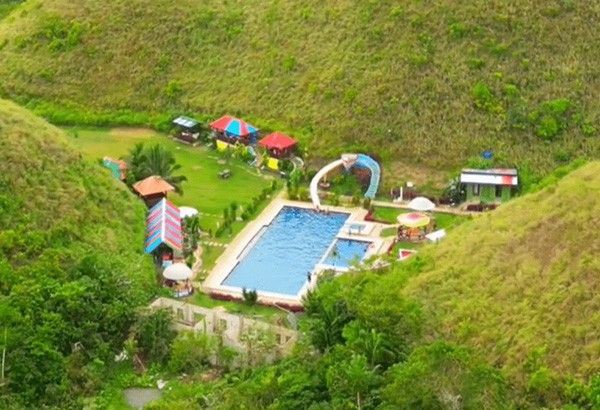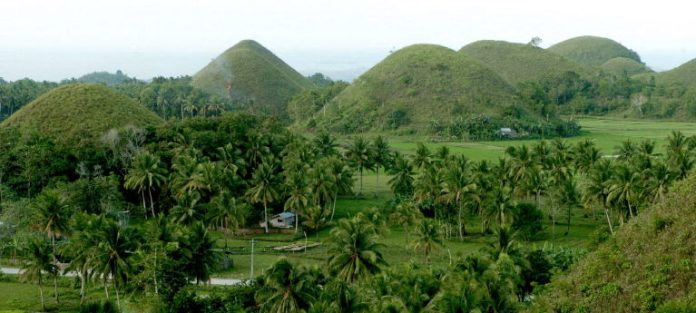The past
When I visited Madrid in 2019 to attend the climate negotiations, I could not help but stare at the four towering skyscrapers in the middle of the city. They are collectively known at the time as “Cuatro Torres”. For a while, I wondered why the sight of four modern buildings captivated me. I have seen many skyscrapers before, after all.
Once I returned to Manila after the conference, I found time to visit Luneta. It is one of those places that I will not get tired of visiting, being one of the few parks that are big enough in Metro Manila. As a history fan and a heritage advocate, I also regard it as a representative of the very identity of the Filipino nation. This is best exemplified by the Rizal Monument, which I stared at.
And then I saw that building in the background, that “photobomber”. And that is when it finally hit me; the moment when I understood why Cuatro Torres stood out so much to me.
Aside from the functional dimension, the planners also carefully considered its aesthetic aspect. When I stared into those towers, there was nothing else that was there to distract me. All my attention was on that view. As the four tallest buildings in Spain, it is also a statement of Madrid’s vision of its future as much as its architecture.
In other words, all the pieces fit together. If properly handled in the next few decades, the Cuatro Torres may become a bonafide heritage asset for Madrid and Spain.
In contrast, the “photobomber” simply does not fit with the view of Luneta. It harms the intangible worth of arguably the Philippines’s most famous landmark. Yet the local government at the time allowed its construction to push through. It was a clear disregard for the value of cultural heritage in favor of business interests, a value that existing laws were inadequate to protect.
As much as we want to say the Luneta “photobomber” is a rare case, it is really more of the normal.
The present
The Chocolate Hills of Bohol collectively comprise one of our country’s most iconic landmarks, with its value in terms of natural heritage recognized locally and globally. It has been a protected area since 1997 under Philippine law, and a National Geological Monument recognized by UNESCO since 1998. It is also currently proposed to be added to the UNESCO World Heritage List.
Yet a resort was apparently allowed to be built in the middle of a supposed protected area anyway. While some of the legalities regarding this matter still need to be clarified as of this writing, there are obvious questions to which the public needs answers.
Why was the resort still operating if the DENR issued a Temporary Closure Order last year? Why was it running if it did not have an Environmental Compliance Certificate? Why was it even built in the first place without that document?
If the social media post had not gone viral, would most of us even have known that the most famous part of the Philippines’s first UNESCO Global Geopark has this problem?
Whatever the details may be, no matter which angle we use, it is undeniable that existing laws were either improperly enforced or simply ignored. Once again, the value of a heritage site that goes beyond its quantifiable, economic worth was disregarded to accommodate a profitable enterprise.
Many other places in the Philippines that can be regarded as having significant natural or cultural heritage are currently under threat. Just to give one example, the Verde Island Passage, known as the “center of the center for marine shore fish biodiversity” and is a potential candidate to be a UNESCO World Heritage Site, suffered an oil spill due to negligence and poor implementation of existing laws.
This is yet another sad reminder of the lack of importance much of the nation gives to our collective identity. Many Filipinos are conditioned to always prioritize making money, to equate only it with their concept of development, and to regard finance as the economy itself. It is a manifestation of the “technocratic paradigm” that dominates many decisions being made, from the national to the community levels, that hinders our sustainable development.
Instead of properly valuing and understanding our history, many Filipinos choose to either “make history” (a.k.a., become famous), revise it, or accept the revised version just to suit their agenda. It is ironic that a nation with this mindset conditioned by long-running social, geographical, economic, and political factors throughout its history opts to overlook or undervalue said history.

The future
Don’t get me wrong; it is not like the Philippines is incapable of valuing and protecting our heritage. For every “photobomber”, there is a San Agustin Church (another World Heritage Site) that recently reclaimed the parking lot in front of it as a public open space. For every resort in the middle of a Global Geopark, there is a sustainable ecotourism model seen in the Puerto Princesa Subterranean River.
It is a matter of having the political will to properly enforce laws that protect sites that represent our heritage. It is about having the patience, foresight, and openness to see and protect the true value of these sites and what they mean to the nearby communities, tourists, the surrounding natural environment, and the rest of the world. It is about showing the kind of “Pinoy Pride” that is neither toxic nor tokenistic for once, a crucial part of our collective identity as a nation.
The case of the resort in Chocolate Hills has made many netizens remark how hard it is to, as the current tourism slogan goes, “Love the Philippines”. And I can’t blame them for feeling that way.
On the other hand, love is also a choice. The uproar over this incident is an indicator that through the lens of heritage, Filipinos still care and love this country.
John Leo is the National Coordinator of Aksyon Klima Pilipinas and the Deputy Executive Director for Programs and Campaigns of Living Laudato Si’ Philippines. He is also a member of the Youth Advisory Group for Environmental and Climate Justice under the UNDP in Asia and the Pacific.









